It’s Summer NAMM 2017, and Gamechanger Audio’s booth—hardly more than a card table—is shoved against the back wall amongst the sorts of wares that make you quicken your pace and avoid eye contact. You hazard a glance at the lone product on display, a skinny black box with a brass piano-style sustain pedal, and can’t help thinking it seems as much a solution in search of a problem as the head-scratchers at adjacent booths.
And yet the earnestness/nervousness of the twentysomethings behind the table makes you wonder. Do they know how brash their company name strikes everyone? Do they realize how many people passing by are smirking inwardly and writing them off, stomp unheard, for their sheer audacity?
Intrigued, you stop and strike up a conversation. The Slavic accent is immediately apparent. The leader introduces himself as Ilja, plugs in a guitar, and begins explaining the strange-looking device. Your eyes wander back to the piano-style activator, and you feel a surge of the previous pessimism mingled with budding pity and horror: Did these guys blow a wad of cash on a transatlantic trip just to exhibit a quirky-looking sample-and-hold stompbox?
But the more you listen—both to the words coming out of Ilja’s mouth, and to the haunting layers of textured sounds coming from the Plus—the more you realize perhaps you are the fool.
* * *
Six months later, the Latvian crew is once again at NAMM, only this time it’s the huge Winter show in Anaheim. What’s more, they’re on the main show floor—up where the big cats play. Their booth is four times its previous size and crawling with guitarists itching for a go at Gamechanger’s latest: a deliciously violent-sounding fuzz box called the Plasma Pedal that appears to be more conventional than the Plus … that is until you see that the input signal is passing through a xenon-gas-filled tube as literal lightning.
* * *
Fast forward another year. Gamechanger (gamechangeraudio.com) is back on the main floor at Winter NAMM, and the crew, dapper in skinny ties, white shirts, and black slacks, is even bigger. The company’s newest devices—Motor Pedal and Motor Piano prototypes that pair musical-note information with mechanical sounds emanating from a series of miniature spinning motors—don’t just prove Gamechanger Audio is aptly named. They make it clear it’s high time PG take a closer look at this cadre of truly different-thinking designers.
* * *
“I fucking hate pedals … I think the whole boutique pedal world is a little bit boring … a little bit silly.”
It’s not quite the sentiment we’re expecting from the head of an outfit whose sole products at the moment are pedals. It’s more like what we’d expect from, say, a hardcore rockabilly player. Interestingly, Ilja Krumins is both.
“We don’t see this as a pedal company, and we don’t see ourselves as pedal nerds,” he says matter-of-factly via video-call from the company’s sparkling-clean two-level loft office in Riga, Latvia. “We are trying to find interesting ways to mangle sound … to extract sound out of interesting items.”
The more we talk—about Krumins’ background, about the contextual genesis of Gamechanger’s fascinating designs—the more the genius of this up-and-coming outfit comes into focus.
* * *
Let’s start off talking about your journey as a musician. Who were your favorite guitarists and bands?
At first, Jimi Hendrix. Deep Purple, the obvious bands that you gravitate towards when you’re starting. The stuff that made guitar cool. Pretty soon it was Stevie Ray Vaughan, then Brian Setzer. Then probably John Scofield. These days my favorite guitarist is J.J. Cale.
I started playing when I was 16. My first guitar was a ’78 American Strat, which was super rare in these parts. It was $500, so it was a no-brainer. That was a big motivation to play. In a year’s time, me and Matiss [Tazans, drummer and Gamechanger’s marketing and public relations manager] met and formed a standard, pentatonic-scale-based rock ’n’ roll band.
Gamechanger’s first product, the Plus Pedal, records all incoming audio and uses a pressure-sensitive, multi-function piano-style pedal to engage a “smart looper” at varying levels of attack and decay as the unit captures the last half of the latest note or chord and creates a seamless loop out of it.
How long ago was this?
Well, me and Matiss were 17 and 18. Now we’re 27 and 28—oh fuck, that’s 10 years ago. Shit! Okay, so yeah, then we started, like, ripping off all the classic rock stuff, writing our own songs. The band was called Acid Rain. We had the basic mix of dad rock, played with a lot of enthusiasm and energy.
What sorts of gear did you use early on?
I fucking hate pedals. I only had a Tube Screamer and a Danelectro Dan-Echo. I loved that echo, because it’s one of the few that does a good slapback—and it has a tone control. I don’t understand why delay pedals rarely offer a tone control. When I want a rockabilly slapback, I want it to be really crispy and trebly, because I want it to be tight. But if I’m doing a slower delay, I want to roll off the treble so it’s wishy-washy. I also had a Fulltone Supa-Trem. So yeah, Gretsch guitar, Tube Screamer, delay pedal, tremolo, and a Fender-style amp.
We spent about a year in rehearsals, and for two years we were actively playing clubs. We were really loud and just having fun, compensating for our lack of skill with energy. It was a very nice, innocent time. Then me and Matiss realized we wanted to play more and try to make it a job. At some point, we grew out of dad rock and became fascinated with Americana genres. We made a band called the Big Bluff, which was a rockabilly/country/rock ’n’ roll cover band. We spent a lot of years gigging, trying to learn all these songs properly, but playing them super loud and with a young, rock ’n’ roll attitude. We were super influenced by psychobilly.
Then what?
In 2012 or 2013, me and Matiss, and our bass player, a double-bass guy, moved to London and started writing our own songs. We thought, Okay, Stray Cats became really popular and got their break in London…. We were following that vibe, but mixing really heavy riffs with slap bass through Boss pedals. We all loved the Stray Cats drummer [Slim Jim Phantom], who plays a stand-up kit, so we rebuilt Matiss’s kit. He has this gigantic ’70s, Bonham-style Ludwig drum kit, and we made it so that it could be played standing up. This massive, freakazoid Ludwig kick drum was on a stand, facing upward. It was me on a Gretsch guitar, Matiss on this big Ludwig monstrosity, and this crazy dude on double bass playing through fuzz pedals. We thought we were going to take the world by storm with this strange mix.
Marketing and public relations manager/former Acid Rain and Big Bluff drummer Matiss Tazans (foreground) and other Gamechanger employees hard at work in the loft at company headquarters.
How long did you stay in London?
For three years. I even went to this music school. Matiss and the double-bass guy didn’t last as long. The bass guy left after a year. Matiss stuck around for a while, but we couldn’t find a replacement who was good with the double bass. I stayed to finish school.
Which school was it?
It used to be called Guitar Institute, but now it’s called ICMP—Institute of Contemporary Music Performance. It’s basically a London version of Berklee or Musician’s Institute.
Which program were you enrolled in?
It was called Creative Music or something like that. It had a bit of recording, a bit of technology, a bit of composition, and a bit of guitar. I had this really cool guitar teacher from Italy teaching me sweep-pick shredding on a 7-string prog-metal guitar.
That totally seems like your kind of thing.
[Laughs.] Trying to learn sweep picking on a Gretsch with .012-gauge strings! I was also working a day job, trying to get gigs, and going to concerts. I was not very focused on school. In my third year I had a cool day job, though: I was the night guy in a youth hostel. You’d sit there from 11 at night till 8 in the morning, so you’d get at least five hours of free time where you could just play guitar.
So you were in school for three years. Did you graduate?
Yeah. In the third year I started getting interested. We had this assignment where we had to present a technology-based business plan, and I somehow got obsessed with this theoretical music-software idea.
What was the concept?
I really hope we’ll build it at some point, so I don’t want to give it away! I got a pretty decent grade, though. I had a lot of compliments from teachers.
It sounds like that last year in school turned your mind from being a musician toward getting into the gear business.
Yeah, exactly. The band broke up and both of the guys moved away, so I was there on my own. Also, I broke my wrist and couldn’t play guitar during that third year. But I had the job where I was sitting there all night thinking about stuff. I had to find a new thing to get obsessed about. You know how, if you open this Pandora’s Box, newer and newer ideas start coming in before you’re even finished with the old one? I realized I had a new idea! The idea was … do you still see me—is my video on?
Yeah, I can see you.
This is the Gretsch I got when me and Matiss were 18 and busking in Helsinki, Finland. The idea was, what if I had some kind of thing that emits a magnetic force here [points to Bigsby B6 tailpiece]? When I flip the handle like this [positions vibrato bar over tailpiece], it enters the magnetic field and starts going up and down—and there are controls for depth and speed, too. I knew absolutely nothing about physics and exponential forces, so I spent a lot of time building this stupid idea.
It’s a cool idea!
I spent a year building it, so obviously I loved it. I had the energy and enthusiasm to attach a battery pack and a motor with a belt. But if you stepped back and took a good look, it was stupid. It was this massive contraption—it made no sense as a commercial product. But I had a lot of fun with it, and it was a practical lesson in making something from scratch.
When I finished the tremolo, I already had the idea for the Plus Pedal, but I didn’t have a team. I knew I wasn’t going to be able to build it on my own, so I started talking to some guys I knew from the rockabilly scene here, and it turned out they are electronics engineers. They are the co-founders of Gamechanger Audio.
The Motor Pedal prototype displayed at Winter NAMM 2019 is currently taking a backseat to development of Gamechanger’s ambitious Motor Synth, but based on how cool even the early version sounded, we’re hoping it’s not too much longer till it enters production. Photo by Shawn Hammond
There are four co-founders, right?
Right. Mārtiņš Meļķis and Kristaps Kalva—apart from being cool rockabilly musicians—are extremely talented and skilled engineers. Both were star students at Riga Technical University and got snatched up by the biggest electronics companies here right away. They aren’t the typical guitarist-gets-a-soldering-iron-and-learns-through-Google type of builders—they were both well-educated engineers with prestigious jobs working on very advanced technology-development and manufacturing assignments. I assumed they were full-time musicians, but as soon as I found out they were engineers I approached Kristaps and told him about the Plus Pedal idea. We talked for about an hour, shook hands, and made a deal to start a company and build this thing. Two days later, Mārtiņš came aboard, and about a week after that we converted my flat into a workshop.
Didzis Dubovskis came onboard three, four months later. At first only as a consultant, later—around our first Winter NAMM—as a full-timer. He spent six years at a charter airline called SmartLynx, where he worked as second-in-command sales manager. We were friends in high school, then he went off to study economics. Played bass for a while but then switched to suit and tie. He has always been the most advanced dude in my circle of friends. He was, and still is, a total Metallica, Rammstein, and Black Sabbath freak.
What happened after you assembled the founding team?
We started working on the Plus in October of 2015 and spent a year and a half developing it. Everybody finished their day job at about 6 o’clock, from 6 to 7 everybody got dinner, and at 7 everybody met at my apartment to work till 1 in the morning. Saturdays and Sundays, we worked all day. We naively thought it would take two or three months and that we’d have it ready by Christmas. We ended up having it ready for the next Christmas.
What inspired the idea for the Plus?
When we couldn’t find a bass player in London. I had some shows booked and we decided to do them White Stripes-style—drums and guitar. I tried to find delay pedals and shimmer reverbs to provide some kind of backdrop, but it didn’t sound great. We ended up rearranging all the songs, and I was playing riffs instead of solos. So the idea was living in me for a long time, but in some different part of the brain.
So it was inspired by wanting to fill out the sonic spectrum as a duo. Did you have exact ideas about how it would do that?
I had a full idea, but a very basic one: It’s going to select a loop, it’s going to be black, it’s going to be called Plus Pedal, and it’s going to have a brass piano thing on it. Then we started reading books and it was, like, Okay, we’re going to have to program this. Who knows programming? Nobody. Let’s start reading about that shit. We assessed what skills we were going to need, and then we learned a little bit and launched it.
Gamechanger Audio’s full-time crew. Photo by Dmitrijs Sulžics/F64
We crowdfunded the Plus and it was a big success. We showed up at the 2017 Summer NAMM and were really worried, because we put in so much work and our own money into it. But everybody loved it—all these journalists and big musicians. Two members of Roger Waters’ band e-mailed us on the second day of NAMM.
What about the Plasma—how did that idea come about?
After NAMM we started thinking, Okay, what are we going to launch for Winter NAMM [2018]? We felt this second-album[-like] pressure: Shit, we made this one thing, and it’s selling thousands and is a big success—but now people are expecting something else! As our name implies, we’re not interested in doing a booster pedal, a delay, a tremolo, a reverb, a flanger or phaser, blah blah blah. In terms of engineering, that’s not a big challenge for us. We’re not pedal freaks—I don’t know the differences between all the flangers that have ever been released. There are other companies that do that. The way we want to move forward is, let’s let the experts in pedals do the perfect bucket-brigade circuit or whatever. We don’t have experience in that world—and it has a lot to do with growing up in Latvia: Literally 10 years ago, when we were playing as kids, all we had in the stores here was Boss pedals.
So after NAMM we ended up driving through Buckhorn, Kentucky, on our way to New York. We stayed at this ridiculous redneck Airbnb in the middle of nowhere that used to be an old bluegrass recording studio. There were guys with a bit of straw in their teeth like, “Hey, how’s it going?” There was no mobile-phone reception, and there were snakes and shitloads of mosquitoes everywhere. So we’re sitting there, cooking ribs and drinking beer, and we became fascinated by this thing called the Bug Zapper on the front porch. It was going nuts. The darker it got, the more bugs appeared, and this Bug Zapper was going full-time. For some reason, that became kind of an inside joke. Later on, we realized, Hey, let’s do something with that Bug Zapper-type technology!
Hopefully you didn’t have any R&D electrocution accidents.
No, but we learned to control the pitch of a Taser.
That’s awesome.
All jokes aside, we approached it in a serious, scientific way. We were discussing fuzz circuits and I thought, What if we could control the pitch of the Bug Zapper and mike that up? It evolved differently, though. We don’t use any mics.
It ended up not being related to Bug Zapper technology at all, right?
No, but the first experiments definitely were. We also bought—you know the glass plasma-ball toys?—I think we bought all there were in the whole country, 27 of them, to find out what transformers they’re using and how everything works. It started out in a very primitive way, but we actually redesigned everything. It’s a very efficient system right now.
[Holds pedal up to camera.] Here’s a Plasma pedal. It is at least 10 times more complicated than a standard release by whatever company. It has a transformer in it, which is like a completely stupid thing to put in a guitar pedal. It has a special discharge tube. We want to do more ambitious and crazy ideas. Just kind of break the rules and come up with something different.
We relived the whole process again recently, because we needed to come up with our third product, the Motor Synthesizer. It’s going to be out very soon for Superbooth [May 9–11] in Berlin. It’s going to be really awesome.
What inspired the Motor Synth?
One day Mārtiņš, the head engineer, showed up at work and was like, “I had this crazy dream about drills.” We realized there’s this Nick Cave song—“Stagger Lee” off of Murder Ballads—where, instead of a guitar solo, it’s just a drill solo. So we thought okay, let’s do something like that. The Motor Synth is going to be released in a small desktop format. It’s going to be under $800, it’s going to have eight motors, and you will be able to connect your own MIDI controller.
Would you say there are certain criteria for new Gamechanger products?
First of all, it has to be something innovative—like, it’s never been done before. It has to be challenging from an engineering standpoint, and stimulating from a psychological standpoint. And it has to have practical value. With the Plasma, there’s no objective way to say it’s a better fuzz sound than a different fuzz. I have an old Fender Blender, and it sounds crazy—I love it. The Plasma sounds crazy, too—but it also stimulates your imagination. You get excited. “What the fuck? These actual little sparks are flying, and that’s the guitar signal!” It makes you fall in love with the sound and gives a special vibe to playing it. It’s fascinating to think you’re plucking the string and 5,000 volts [in the rack version of Plasma] are discharging between these electrodes. I like the sound, and I like the psychological aspect that inspires you to think about what’s going on.
So the psychological aspect is a huge part of the equation.
It’s very important. It’s fascinating to think that I’m pressing keys and these strange electromagnetic motors are creating magnetic static that’s being transformed into something else.
Take us through how you went from the drill stuff to the motors.
We liked the idea of using motors as a source of sound, and we realized that we thought about it as a guitar thing just by default—because we are guitarists. But if you take a step back, the potential is much bigger and better if it’s a keyboard. We don’t have a problem with that, because we don’t want to just stick to guitar pedals.
The company’s second offering, the Plasma Pedal, sends the guitar’s signal through a xenon-gas-filled tube with electrodes at each end, then converts the shocked-into-oblivion fuzz signal back to analog for output to your amp.
At Winter NAMM you brought a larger Motor Synth prototype, but you also brought a prototype Motor Pedal. Are you still planning to release that?
The Motor Synth is going to be the main release for now, and later on we’ll see if there’s a market for a guitar pedal. I’m pretty sure we will, because we got a lot of requests for it.
It sounds like you’ve learned a lot since we spoke at NAMM.
We went to the guys at Moog and basically bombarded them with questions. They were super nice and helpful—and super enthusiastic. They loved the motors and how it sounds. They gave us advice about how to launch everything, and what we should change and think about. We got this big master class from their engineers. Also we had a big discussion with this legendary engineer, Tatsuya Takahashi, who created Korg’s Monologue, Minilogue, Prologue, Volca Keys, and Monotron lines. He’s coaching us. It’s pretty cool. Also, here in Latvia we have another guru. One of the biggest modular synth manufacturers right now is a Latvian company named EricaSynths, and they’re literally our neighbors. They have over 150 modules, and they have been an excellent example of how to build a business from Latvia.
What are the pros and cons of being based in Latvia?
In our case, there are very few downsides. It’s the perfect place to start something—but only because we are from here. Your hometown is always the best place to start something. You know people there. You went to school there and know a guy who knows a guy. You know how everything works and how to get stuff. I’m happy that it’s happening here in our hometown, not somewhere else, just because somewhere else is “cooler.” Now we are a legit company. We’re good for this local scene, and we are employing people. That feels great.
Is every product made there in Riga?
It’s all being made in a factory in Latvia. We don’t like solder—we don’t believe in handmade electronics. It doesn’t make any sense. There’s some kind of romantic image of the handmade, boutique pedal guy with his soldering iron and, like, his girlfriend helping him. I think food and beer should be handmade, with love. Electronics should be made with precision, by German robots. All of our soldering is done by a pick-and-place robot at a consumer-electronics factory where they make everything from gadgets to Internet routers and appliances.
Another cool thing about Latvia is that we have a really strong, old-school educational system that puts a lot of emphasis on physics, electronics, and mathematics, that kind of stuff. In the Soviet times, this place was the central manufacturer of electronics devices for the whole Soviet system. We have a lot of old-school professors who really take this stuff seriously. The level of education in these exact sciences is really high here. Building a booster … come on. Are you serious?




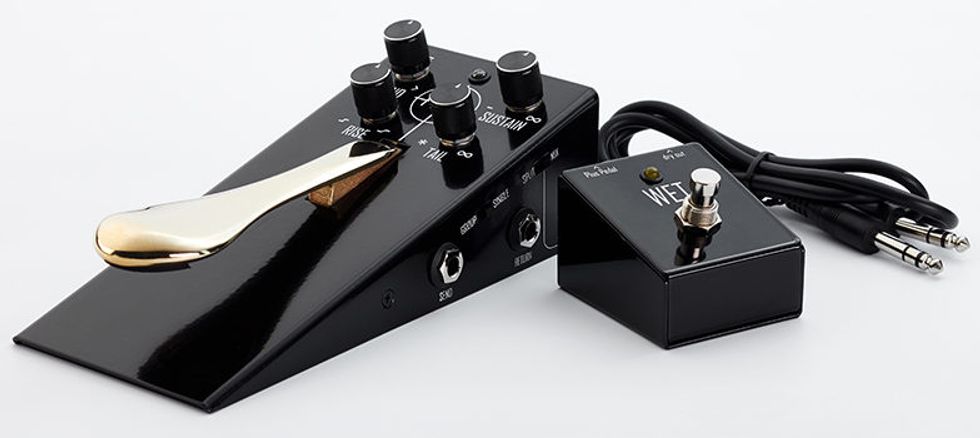
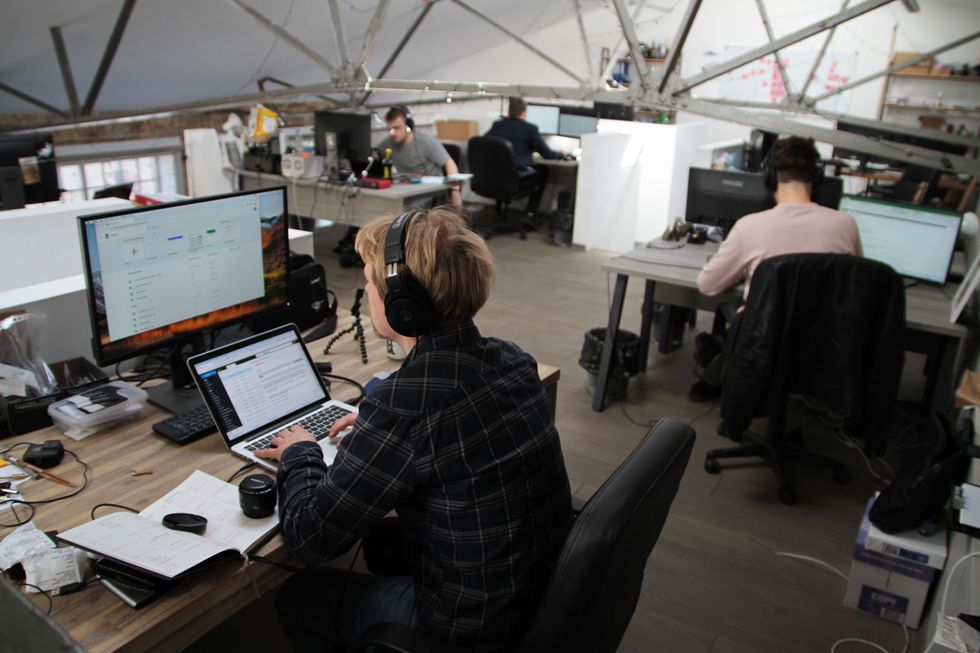
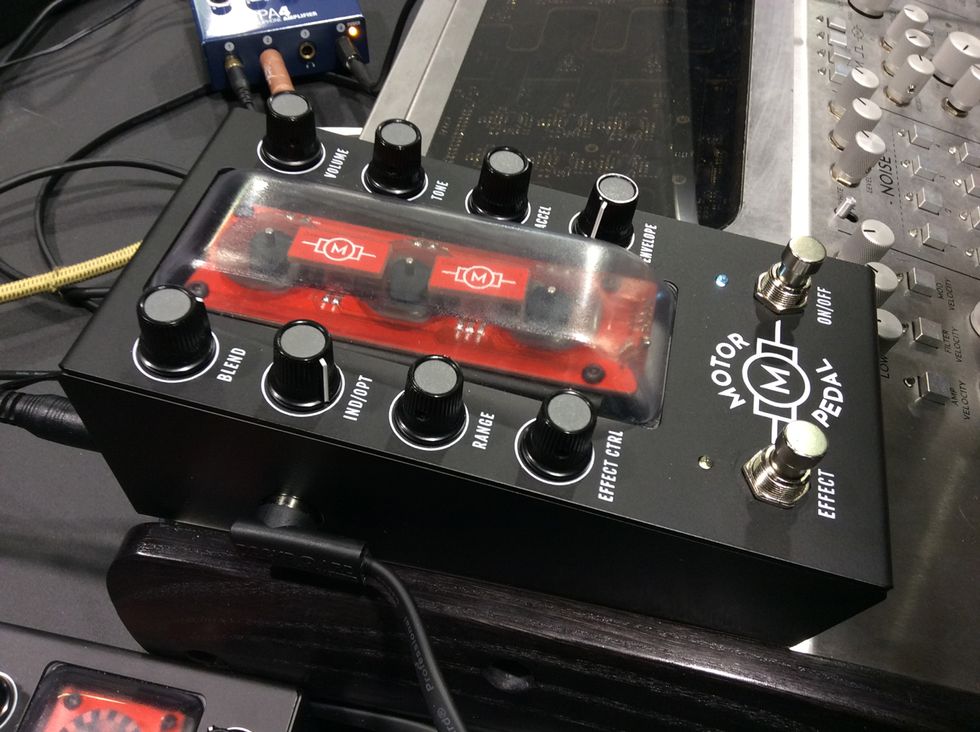
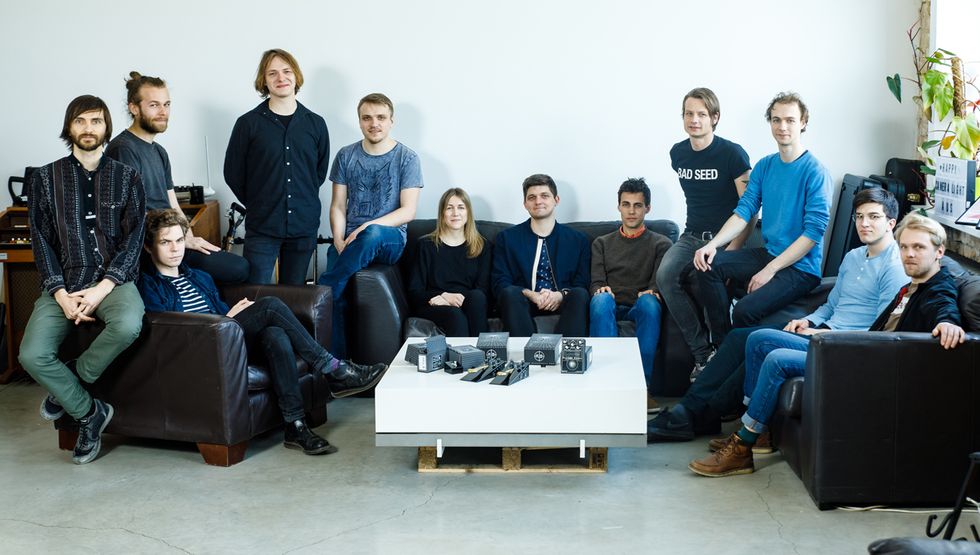
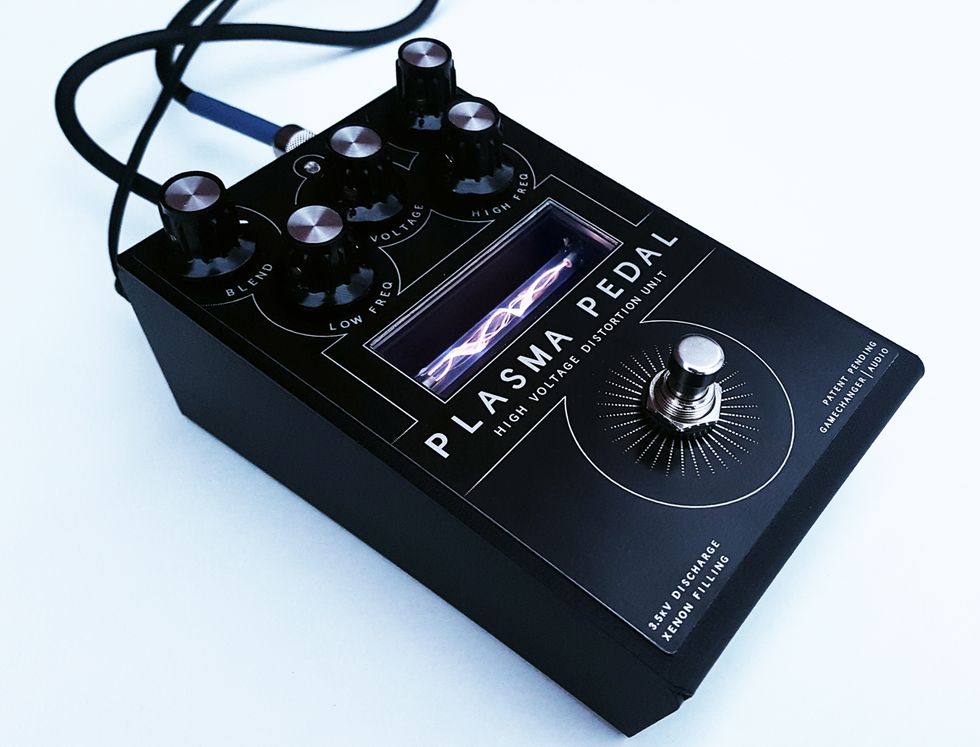




![Rig Rundown: Russian Circles’ Mike Sullivan [2025]](https://www.premierguitar.com/media-library/youtube.jpg?id=62303631&width=1245&height=700&quality=70&coordinates=0%2C0%2C0%2C0)

























